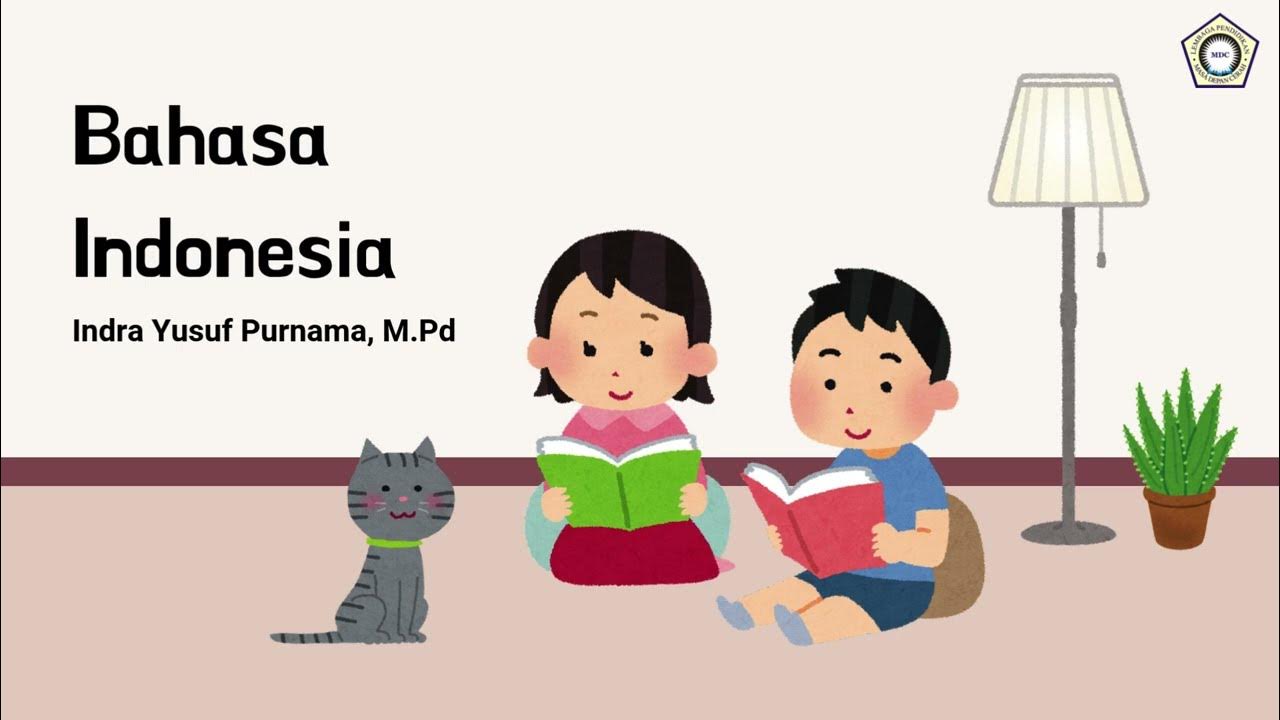GRADE 9 CHAPTER VII | SANGKURIANG | FOLKLORE | NARRATIVE TEXT
Summary
TLDRIn this video, viewers are introduced to the concept of folklore and narrative texts. The lesson covers the structure of narrative texts, including orientation, complication, and resolution, as well as language features such as past tense, action verbs, and time adverbs. Using the Indonesian folklore story of 'Sangkuriang,' the video explores these elements in action. The story teaches moral lessons like the importance of honesty, controlling anger, and not being deceived. The video encourages viewers to analyze their own favorite folklore stories and understand their structure, language, and moral values.
Takeaways
- 😀 Folklore is a type of narrative text that shares traditional stories often passed down through generations.
- 😀 A narrative text is a fictional story designed to entertain readers and teach moral lessons.
- 😀 The primary purpose of a narrative text is to entertain or amuse the reader while conveying a moral value.
- 😀 Narrative texts typically use the past tense to describe events that have already occurred.
- 😀 Action verbs, such as 'ran,' 'said,' or 'hit,' are frequently used in narrative texts to describe actions.
- 😀 Adverbs of time and time conjunctions like 'once upon a time' and 'by dawn' help establish the sequence of events in a story.
- 😀 The structure of a narrative text includes three main parts: orientation, complication, and resolution.
- 😀 The **orientation** part of the narrative introduces the characters and sets up the time and place of the story.
- 😀 **Complication** involves the central problem or conflict, which is typically solved as the story progresses.
- 😀 The **resolution** is the final part where the problem is solved, and the story concludes.
- 😀 The story of 'Sangkuriang' is an example of folklore that highlights themes like love, deception, and anger.
- 😀 The moral lessons from 'Sangkuriang' include the importance of honesty, controlling anger, and not being easily deceived.
Q & A
What is folklore and how is it related to narrative texts?
-Folklore is a type of narrative text that typically involves stories passed down through generations. It often contains elements of fantasy or imagination and is meant to entertain or convey moral lessons.
What is the primary purpose of narrative texts?
-The primary purpose of narrative texts is to entertain and amuse the reader. Additionally, they often convey moral lessons or values through the storyline.
How are narrative texts structured?
-Narrative texts are typically structured in three parts: 1) Orientation, which introduces the characters and setting; 2) Complication, which presents the main problems or conflicts; 3) Resolution, which shows how the problems are resolved.
What are the key language features of narrative texts?
-The key language features of narrative texts include the use of past tense, action verbs, adverbs of time, and time conjunctions, which help create a sense of sequence and action in the story.
What does the orientation section of a narrative text do?
-The orientation section introduces the characters and provides details about the setting, such as the time and place of the story. It is usually found in the first paragraph.
What role does the complication section play in a narrative?
-The complication section outlines the main problem or conflict of the story. It describes the challenges faced by the characters and how they attempt to overcome them.
How is the resolution section of a narrative text important?
-The resolution section brings the story to an end by resolving the conflict, whether in a positive or negative way. It provides closure and concludes the narrative.
Can you describe the main plot of the story 'Sankuri Young' from the video?
-The story of 'Sankuri Young' involves a princess, Dai Young Soombie, who marries a dog-man cursed by a witch. Their son, Sankuri Young, unknowingly meets his mother years later. After a series of challenges, including a difficult task and betrayal, Sankuri Young learns the truth about his identity.
What moral lessons can be drawn from the story of 'Sankuri Young'?
-The story teaches several moral lessons: do not lie, control your anger, and avoid being deceived. These lessons are highlighted through the interactions and outcomes in the narrative.
How can readers analyze a narrative text like 'Sankuri Young'?
-To analyze a narrative text, readers can identify the orientation, complication, and resolution sections, recognize language features such as past tense and action verbs, and reflect on the story’s communicative purpose and moral values.
Outlines

此内容仅限付费用户访问。 请升级后访问。
立即升级Mindmap

此内容仅限付费用户访问。 请升级后访问。
立即升级Keywords

此内容仅限付费用户访问。 请升级后访问。
立即升级Highlights

此内容仅限付费用户访问。 请升级后访问。
立即升级Transcripts

此内容仅限付费用户访问。 请升级后访问。
立即升级浏览更多相关视频

Narrative Text | Listening Activity

Bahasa Indonesia PB Akhir - Pengenalan Teks

Materi Bahasa Inggris Kelas X SMA - Kurikulum Merdeka | APA ITU NARRATIVE TEXT

📚 TEXTOS NARRATIVOS para NIÑOS 📚 ELEMENTOS, CARACTERÍSTICAS Y TIPOS DE TEXTOS NARRATIVOS 👍

MATERI PEMBELAJARAN TEKS ARGUMENTASI KURIKULUM MERDEKA KELAS XI SMA/SMK SEDERAJAT

Argumentative Text Explanation
5.0 / 5 (0 votes)
